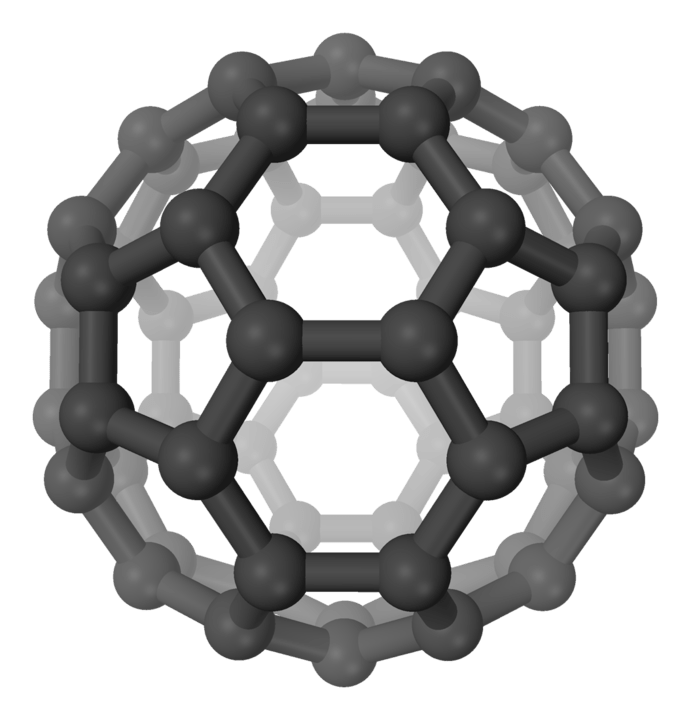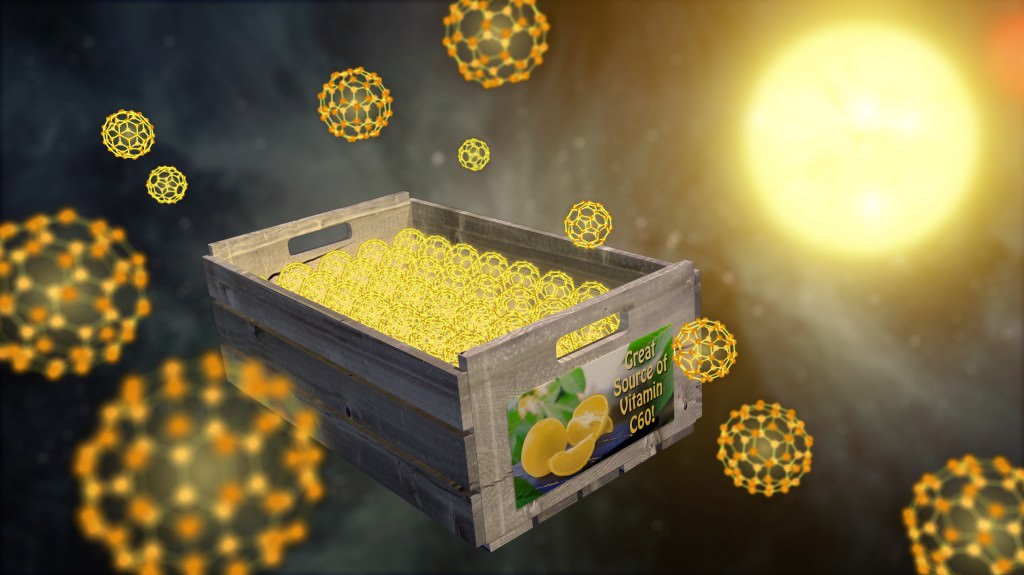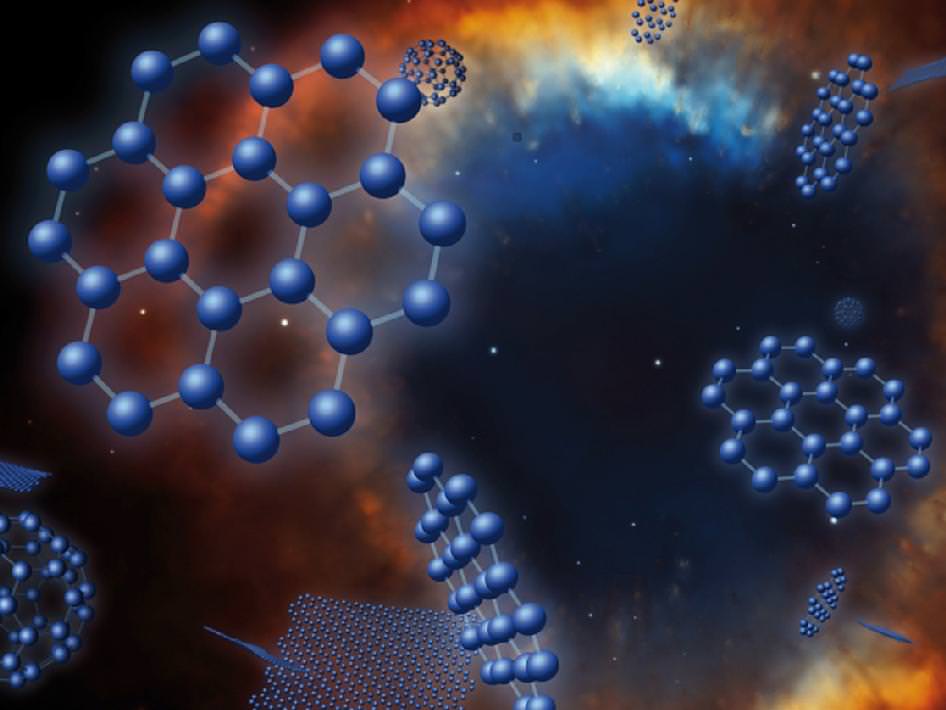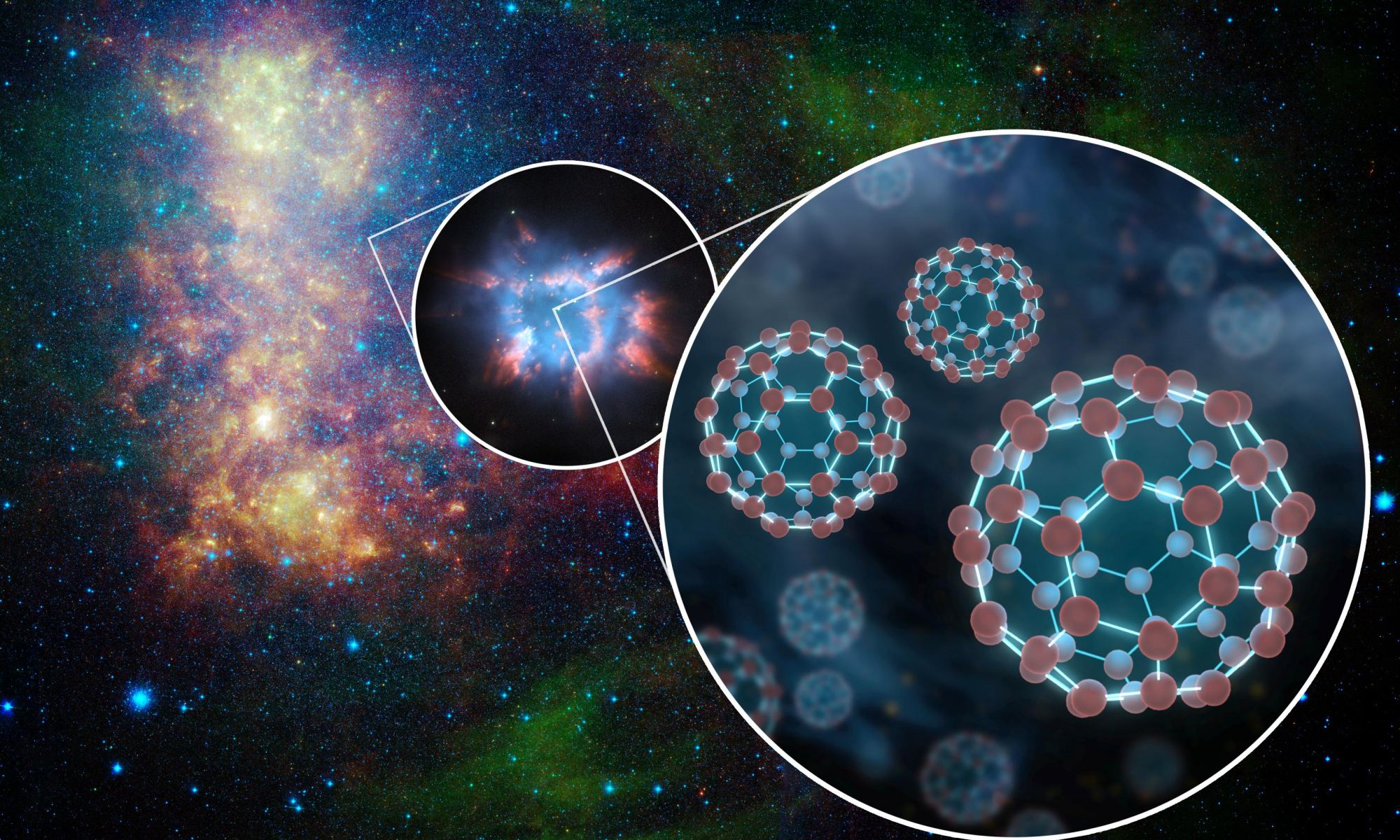Scientists working with the Hubble Space Telescope have found a very complex molecule out there in space. Called Buckyballs, after renowned thinker Buckminster Fuller, they are a molecular arrangement of 60 carbon atoms (C60) in the rough shape of a soccer ball. Though it’s not the first time these exotic molecules have been spotted in space, it is the first time that Buckyball ions have been found.
The Buckyballs, (aka Buckminsterfullerenes) were found in the Interstellar Medium (ISM,) the diffuse matter and radiation that exists in between solar systems. Since ISM is the sort of fundamental matter out of which stars and planets eventually form, astronomers are really interested in it. Understanding the contents of the ISM sheds light on the rise of stars, planets, and eventually life itself.
“Our confirmation of C60+ shows just how complex astrochemistry can get, even in the lowest density, most strongly ultraviolet-irradiated environments in the Galaxy.”
Martin Cordiner, Lead Author, Goddard Space Flight Center
The team behind this discovery published their findings in the Astrophysical Journal Letters on April 22nd, 2019. The paper is called “Confirming Interstellar C60+ Using the Hubble Space Telescope.” The lead author is Martin Cordiner of the Catholic University of America, stationed at NASA’s Goddard Space Flight Center in Greenbelt, Maryland.

On Earth, scientists have found C60+, but it’s rare. They’ve found it in rocks and minerals, and also in soot generated by high-temperature combustion. Finding the ionized (electrically charged) form of C60+ in the ISM is surprising, because it’s such a harsh environment.
The C60+ in space is ionized by stars. The ultraviolet light from stars strips an electron from the C60, which leaves the molecule with a positive charge. Finding these complex carbon molecules in space is one step towards a more complete catalogue of the matter in the Interstellar Medium.
Life: The Ultimate Chemical Complexity
“The diffuse ISM was historically considered too harsh and tenuous an environment for appreciable abundances of large molecules to occur,” said lead author Cordiner in a press release. “Prior to the detection of C60, the largest known molecules in space were only 12 atoms in size. Our confirmation of C60+ shows just how complex astrochemistry can get, even in the lowest density, most strongly ultraviolet-irradiated environments in the Galaxy.”
“In some ways, life can be thought of as the ultimate in chemical complexity.”
Martin Cordiner, Lead Author, Goddard Space Flight Center
Carbon is key to life, as far as we know. It’s abundant, and it can form unique and diverse compounds. Carbon can form large molecules called polymers, at common Earth temperatures. Polymers are a family of molecules with a broad range of properties that play key roles in living tissues like proteins and DNA. It’s difficult to imagine life without carbon.

Since life is based on carbon-bearing molecules, finding complex carbon molecules like C60+ in space is an intriguing discovery. “In some ways, life can be thought of as the ultimate in chemical complexity,” said Cordiner. “The presence of C60 unequivocally demonstrates a high level of chemical complexity intrinsic to space environments, and points toward a strong likelihood for other extremely complex, carbon-bearing molecules arising spontaneously in space.”
Key to finding C60+ in the ISM is what are called Diffuse Interstellar Bands (IDBs.)
The primary materials in the ISM are the usual suspects: hydrogen and helium. But there are many other unidentified complex molecules in the ISM, and the only way to find them is to study the starlight that passes through them.

Different elements and compounds in the ISM can block or absorb certain wavelengths of the starlight. Using spectrometry, scientists can split light into its different wavelengths and examine it. By doing so, they can precisely detect which wavelengths are absent, and deduce the chemicals responsible.
Out in the ISM, this can be difficult. Out there, the absorption patterns revealed by spectrometry cover a much broader range of light, some of which is completely different from any seen on Earth. Those patterns are called Diffuse Interstellar Bands, and they were first discovered in 1922 by American astronomer Mary Lea Heger.
The problem is, to identify the nature of a DIB in space, it needs to be matched with one seen in a laboratory. But there are millions of different molecular structures and their associated DIBs, so it would take lifetimes to identify them all.
“Today, more than 400 DIBs are known, but (apart from the few newly attributed to C60+), none has been conclusively identified,” said Cordiner. “Together, the appearance of the DIBs indicate the presence of a large amount of carbon-rich molecules in space, some of which may eventually participate in the chemistry that gives rise to life. However, the composition and characteristics of this material will remain unknown until the remaining DIBs are assigned.”
Scientists have spent decades trying to find precise laboratory matches for DIBs.
The Venerable Hubble Spots Buckyballs
This is where the venerable Hubble Space Telescope comes in.
The team behind this new research compared C60+ absorption patterns in the laboratory with DIBs that the Hubble observed in the Interstellar Medium. The laboratory DIB work was done by another team from the University of Basel, in Switzerland. The Hubble was able to observe the C60+ absorption data from its perch in orbit, where the water vapour in Earth’s atmosphere can’t block it. Even so, the team had to push the space telescope beyond its sensitivity limits.

The discovery of Buckyball ions in space has the team fired up for more. The thinking goes, if these complex carbon molecules are present out there in the ISM, are there others? To find out, more laboratory work is required with other complex carbon molecules, to identify their DIBs so they can be matched with future observations of the ISM.
For now, the team behind this study wants to continue to look for Buckyballs in space, to see how common they are. Lead author Cordiner thinks that, based on their findings so far, C60+ is widespread in the galaxy.
What that means for the appearance and evolution of life on Earth and elsewhere is up in the air, but it’s an intriguing line of inquiry.
Sources:
- Press Release: Hubble Finds Tiny “Electric Soccer Balls” in Space, Helps Solve Interstellar Mystery
- Research Paper: Confirming Interstellar C60+ Using the Hubble Space Telescope
- Wikipedia Entry: Interstellar Medium
- Wikipedia Entry: Carbon

